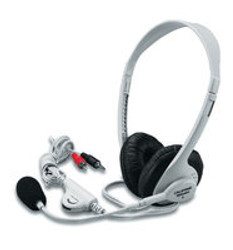Califone Common Core and Headsets
Posted by Quinn Repp on 20th Oct 2014
Common Core and headsets: what you need to know.
GUEST COLUMN | by Tim Ridgway
As the Common Core State Standards (CCSS) are implemented across the country, much of the focus has been on the equipment schools and educators will need to meet the new standards. While hardware (tablets, laptops, and other mobile learning devices), corresponding operating systems and necessary bandwidth have received most of the attention, there is another critical hardware component that supplements these 1:1 devices and helps educators achieve their desired learning goals.
Imagine twenty (or more) students with iPads® or Chromebooks® in a classroom. It’s a tech-savvy educator’s dream, a classroom primed for learning. Now, imagine part of the learning involves them watching a video, playing a game or taking a language test requiring verbal responses. The dream quickly turns into a cacophony if all of the students listen at the same time through their device’s speakers or if the students are each talking into the built-in microphones.
The best way to avoid this chaos is by making sure each student uses a headphone or headset (a headphone with an attached microphone). This not only keeps the sound level down in the classroom, but the learning benefits extend far beyond diminished noise. They enable educators to incorporate rich audio resources into their lessons to support and achieve academic goals. Headsets and headphones also help reduce ambient noise (reducing the need to increase the volume), which helps better isolate the audio content and keeps students on task.
Headphones and headsets are important classroom tools, essential to computer and mobile-based learning activities such as student podcast creation, online class discussions and listening comprehension exercises. They help students build speaking and listening skills, which are vital components defined by the English Language Arts (ELA) portion of the Common Core State Standards (CCSS).
There are two consortiums with which almost all states have aligned themselves that support the Common Core: the Partnership for the Assessment of Readiness for College and Careers (PARCC) Assessments, and Smarter Balanced. While PARCC and Smarter Balanced have certain philosophical differences about how to best meet the new standards, each requires headphones for assessments.
For example, PARCC states, “Headphones/earphones are required for all students for all PARCC assessments,“ while Smarter Balanced requires headphones be provided for English Language Arts assessments. Each consortium also includes technical specifications for the audio-visual hardware necessary for students to take tests.
Of course, when you have students listening to lessons and tests through headphones, safety becomes a concern. It is important to provide tools that deliver clear audio, but do not pose any danger to a student’s hearing.
Other issues are cost and life expectancy. Supplying enough headsets can be expensive, and any piece of equipment that passes through the hands of an endless number of kids week-to-week, year-to-year, is susceptible to wear and tear. Invest in equipment that is cost effective up front, but that is well-made and durable enough to survive the punishing classroom use.
Make sure the manufacturer warrants its product for use in schools (“institutional” usage). Consumer brands typically offer support only for the less frequent and gentler home use – not for the day-in and day-out student demands in classrooms.
Another important component of cost is device compatibility. Whether a school is implementing a BYOD, 1:1 or mobile learning initiative, the equipment that supplements those devices is just as important as the device itself for delivering and enhancing student learning. However, with so many different devices being brought into schools and districts, it is imperative to have technology that is compatible across multiple platforms. Schools and districts need to ask questions such as: Do we need headphones (listening only), headsets (listening and speaking) and which type of plug (USB, single or dual 3.5mm)? Will it work with all the devices students utilize? Is it compatible with multiple operating systems? These questions carry a tremendous weight when determining an investment, but knowing the answers can save schools and districts money long term.
As you carry out your own plan for achieving the learning objectives outlined in the Common Core, keep in mind that students should be equipped with a complete set of tools for learning. They need to be able to find the information their education demands, but they also should be provided with the proper equipment to deliver information to them, like headphones and headsets.







